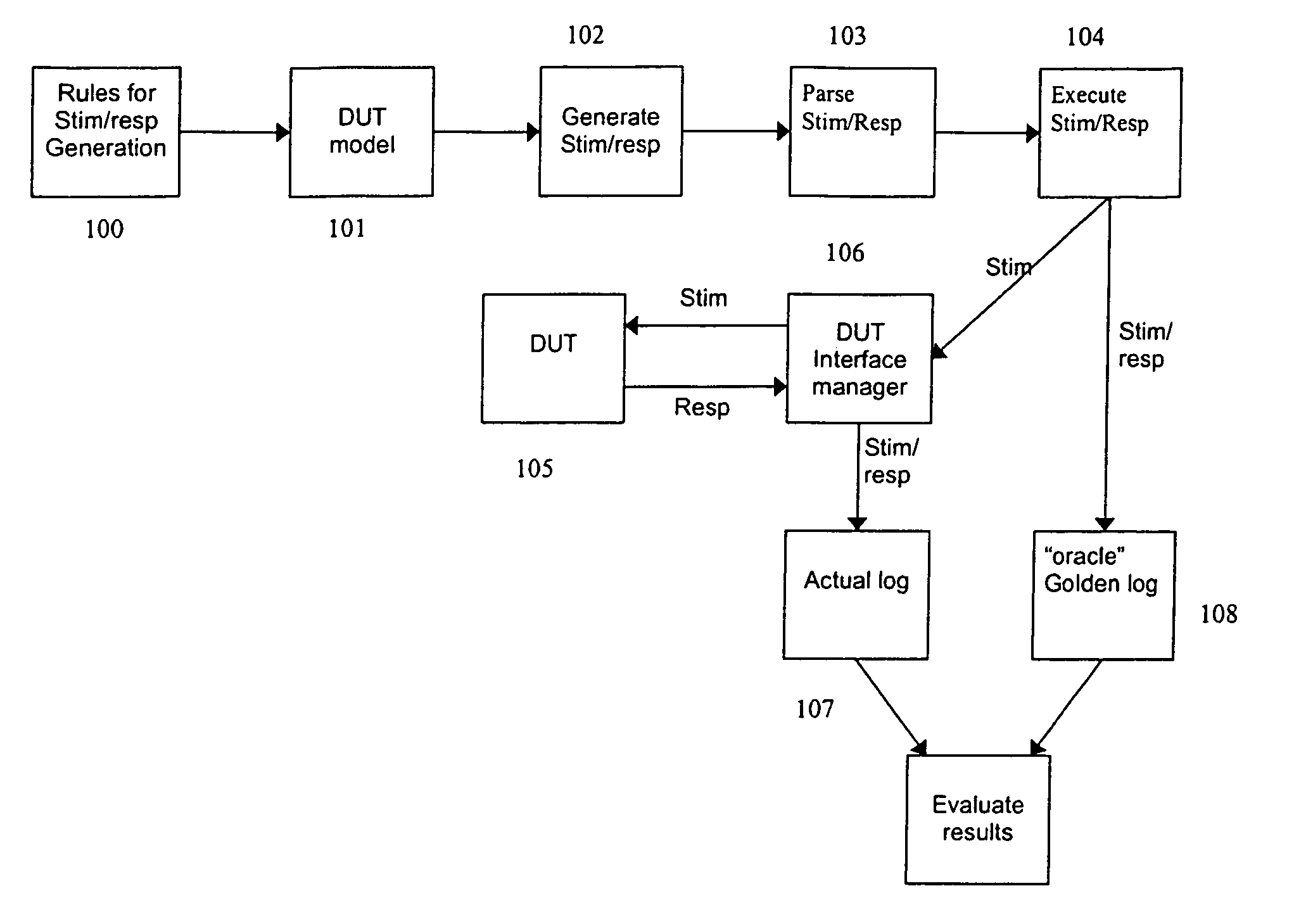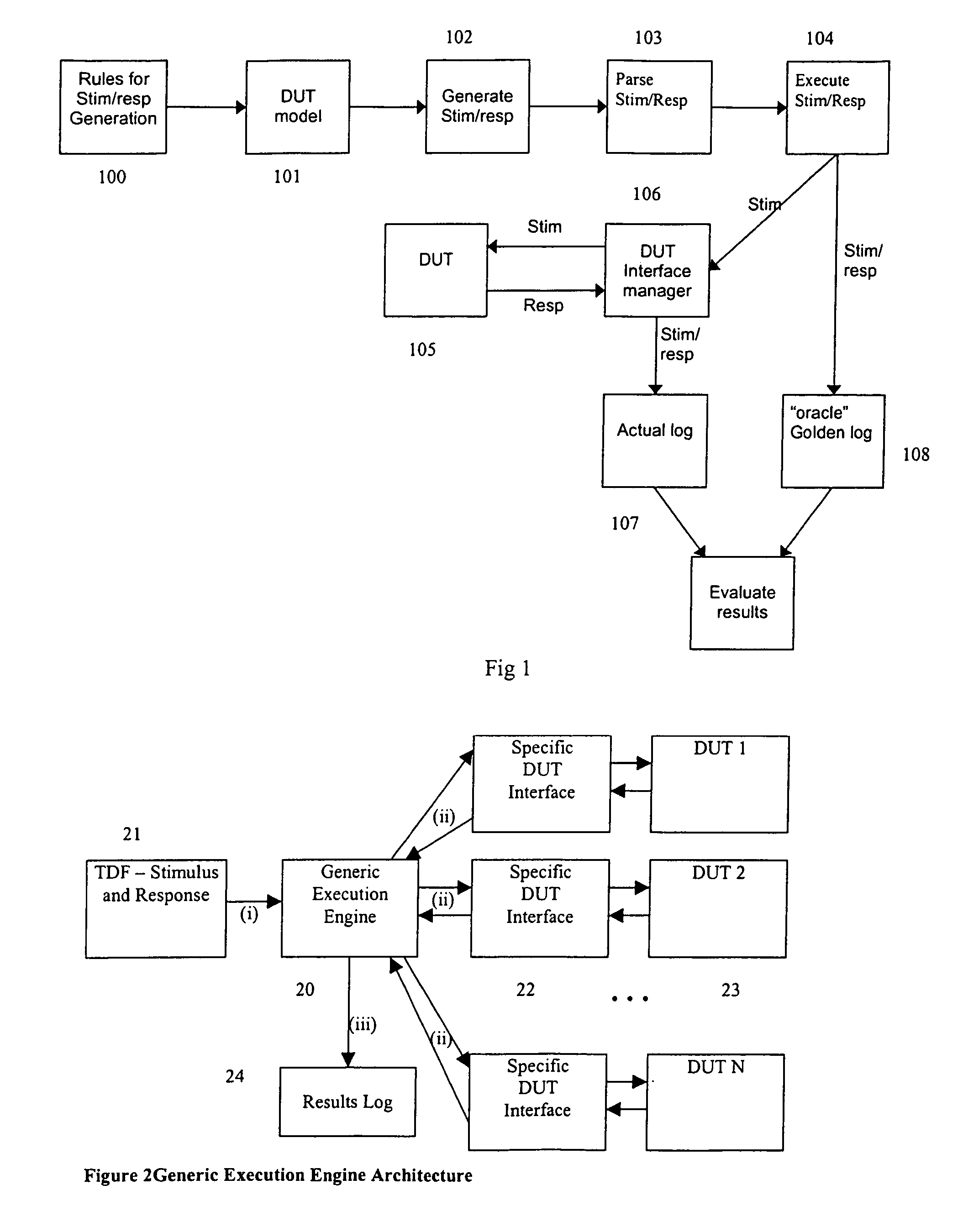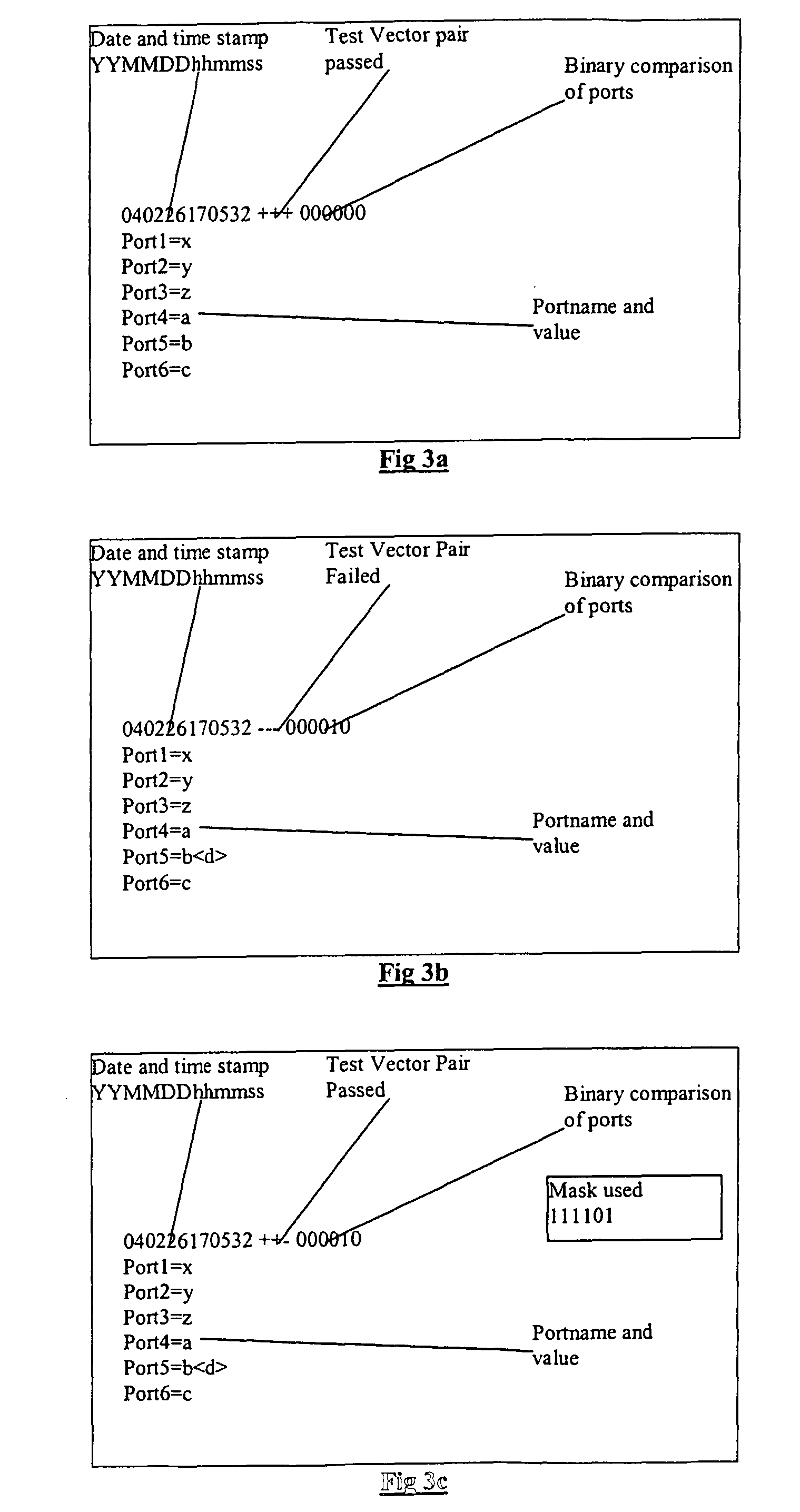Testing of Embedded Systems
a technology of embedded systems and embedded devices, applied in the direction of testing circuits, resistance/reactance/impedence, instruments, etc., can solve the problems of complex embedded system complexity, provide developers with highly complex software solutions for embedded system design, and disrupt the desktop computer mark
- Summary
- Abstract
- Description
- Claims
- Application Information
AI Technical Summary
Benefits of technology
Problems solved by technology
Method used
Image
Examples
Embodiment Construction
[0117] By way of background, a number of terms are here defined.
[0118] DUT: Device Under Test. A target embedded device or, an embedded system comprising one or more embedded devices that is the subject of tests. Furthermore, a DUT may comprise one or more embedded systems being the subject of tests.
[0119] Model: An approximation of selected aspects of the behavioural characteristics of a real-world embedded DUT and real world influences on the embedded DUT. A model may use Architectural Level Descriptions (ALD) or Definitions, State Transition Definitions, Message Sequence Charts (MSC's), Hierarchical Message Sequence Charts (HMSC's), Extended Message Sequence Charts (EMSC) and Data Type Definitions to provide an abstract representation of the physical interface, real world environmental influences and constraints upon an embedded DUT.
[0120] Output Port: An output port is used in a model to represent a physical output on the DUT being modelled. The physical outputs of a DUT may ...
PUM
 Login to View More
Login to View More Abstract
Description
Claims
Application Information
 Login to View More
Login to View More - R&D
- Intellectual Property
- Life Sciences
- Materials
- Tech Scout
- Unparalleled Data Quality
- Higher Quality Content
- 60% Fewer Hallucinations
Browse by: Latest US Patents, China's latest patents, Technical Efficacy Thesaurus, Application Domain, Technology Topic, Popular Technical Reports.
© 2025 PatSnap. All rights reserved.Legal|Privacy policy|Modern Slavery Act Transparency Statement|Sitemap|About US| Contact US: help@patsnap.com



